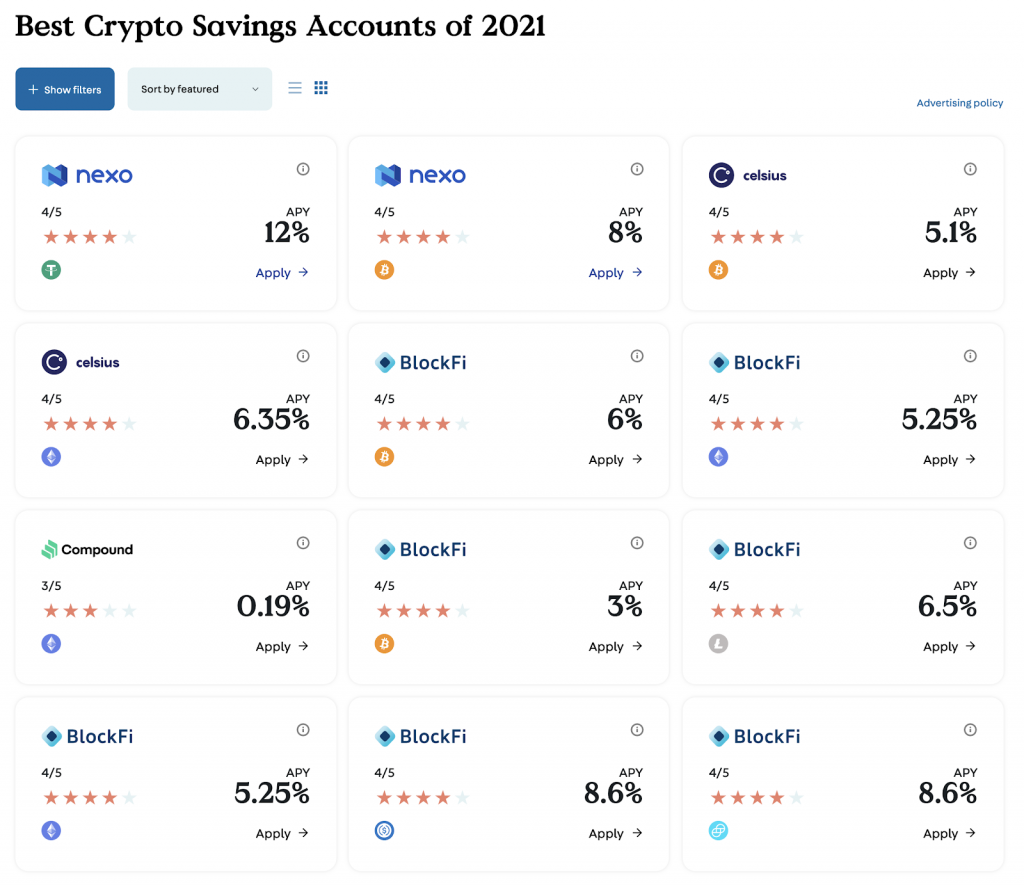In a world of historically low interest rates, a growing number of people are lending out their cryptocurrency to earn interest. This can serve as an effective way to generate additional income, particularly for those crypto investors who intend to hold for many years.
Of course, there are several factors to consider before deciding to lend. Key considerations include the tax ramifications and platform-specific risks. This resource covers key aspects of crypto lending and highlights some of the most widely used lending platforms.
Custodial vs Non-Custodial Lending Platforms
Custodial lending platforms are platforms where users entrust their cryptocurrency with the business that runs the platform. Those who use these platforms are essentially transferring their ownership rights to the business that operates the lending platform. As is the case with custodial exchanges, users can typically reclaim custody of their cryptocurrency near-instantly. (More on this in the Beginner’s Course in ‘Custodial vs Non-Custodial Storage’.)
Some lending platforms offer insurance products that cover some or all of users’ deposited cryptocurrency. However, the insurance value may not equal the deposit’s monetary value. Note, the nature of these insurance products varies significantly between lending platforms.
Non-custodial lending platforms let you maintain custody of your cryptocurrency, removing counterparty risk. These types of lending platforms are more vulnerable to being hacked through smart contract exploitations. For this reason, ensure a non-custodial lending platform’s smart contracts are audited before depositing any cryptocurrency.
In terms of usability, custodial lending platforms tend to be far more straightforward. To use a non-custodial lending platform, MetaMask is often required. This can be intimidating, especially for those who are not tech-savvy.
READ: How To Use MetaMask
Custodial Lending
BlockFi is an asset management company providing credit services to markets with limited access to simple financial products like savings accounts. Its services include interest-earning accounts, fee-free trading and low-cost USD loans secured in cryptocurrency. BlockFi allows customers worldwide to earn interest in deposited cryptocurrency and offers USD loans backed by cryptocurrencies, including BTC, LTC and ETH.
Celsius is a web and mobile app that allows users to earn interest on deposited collateral or borrow cash or cryptocurrency whilst keeping their assets inside their Celsius wallet. It seeks to re-establish services that have been abandoned by big banks, such as fair interest, zero fees and quick transactions. Celsius shares up to 80% of its revenue with users, allowing them to earn up to 17.78% annual percentage yield (‘APY’). Celsius users can send cryptocurrency to and from one another.
Nexo is a centralised lending platform that lets users transfer cryptocurrency into a Nexo account secured by BitGo. Upon receiving collateral, Nexo calculates the loan-to-value ratio (‘LTV’). Users can then take out a loan in stablecoins or fiat. As of this writing, Nexo manages over US$5B in assets for 1M users.
Binance Savings is a product by Binance whereby users can lend cryptocurrency to Binance Margin and earn interest. It supports flexible savings accounts and locked savings accounts. Flexible savings offer instant redemption and interest is calculated. A locked savings account has a fixed term, providing greater certainty regarding expected interest earnings. Locked savings can only be subscribed to when the product quota is available.
Many other centralised exchange operators offer savings products. Examples include Huobi Earnings, OKEx Earn and Gemini Earn (For more on this, read our Headline Analysis from Aug. 20, 2020, entitled ‘Exchanges in Race to Lock Up Users’ Deposits’.)
Non-Custodial Lending
Aave is a non-custodial liquidity market protocol for earning interest on deposits and borrowing cryptocurrencies. Depositors earn a passive income for providing liquidity to the protocol. Borrowers can borrow after firstly depositing a cryptocurrency as collateral or by taking out a flash loan, an advanced type of loan whereby a user takes out a loan and repays it within the same blockchain transaction.
Compound is a DeFi protocol on Ethereum for borrowing and lending cryptocurrencies. Lenders receive cTokens, which are interest-bearing ERC-20 tokens that represent balances supplied to Compound. Interest rates on Compound are a function of the liquidity available in each market and fluctuate in real-time based on supply and demand.
READ: Earn Interest On Ethereum DeFi Lending Platforms
Use These Websites to Compare APYs
Several websites track and compare APYs between lending protocols:
- DeFi Pulse’s ‘Earn Income’ page lets you compare returns based on the collateral type and how much you want to put down as collateral.
- DeFi Rate’s ‘Crypto Lending Rates’ page displays additional information on platforms and compares lending rates.
- Bitcompare’s ‘Crypto Savings Accounts’ lets you filter by platform and cryptocurrency.
- LoanScan displays financial information and analytics for debt issued on Ethereum.
READ: Comprehensive List Of Crypto Analytics Tools
Comparing APYs on Bitcompare
